Calculate Your LSAT Raw Score
- by
- Apr 15, 2020
- General LSAT Advice
- Reviewed by: Matt Riley
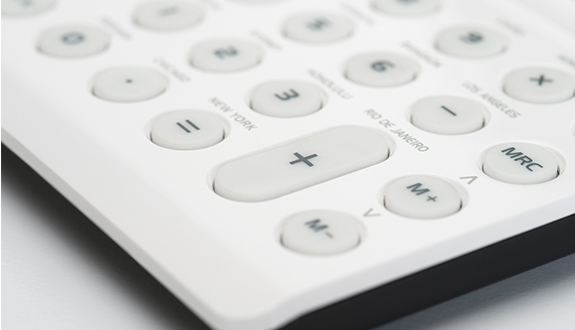

Note: The LSAT-Flex is no more (this was a Covid adjustment), but you can check out upcoming LSAT test dates.
Ever since the LSAT was shortened during Covid (and became known as the LSAT-Flex for a minute), the way LSAC scores the LSAT has never been the same. All the LSAT sections—Logical Reasoning, Reading Comprehension, and Analytical Reasoning—are factored equally into a test taker’s LSAT score. In a way, this makes your LSAT raw score conversion a little easier.
It became even more critical to make sure you master all the sections of the LSAT. Blueprint students get the added advantage of seeing their strengths and weak areas with our powerful analytics.
Note: Beginning August 2024, your LSAT raw score conversion will no longer include the Analytical Reasoning Section because logic games are going away entirely.
The same question arises every time there’s a big LSAT change: how the heck do you take practice exams and score them to prepare for the new LSAT?
Best Practices for Taking Practice LSAT Tests
One way is to continue to take and review the old four-section practice tests. These would have been disclosed tests released prior to the LSAT-Flex.
Yes, the score you get on four-section exams won’t be exact. However, this will still give you a good sense of which parts of the exam you’re improving on and which you need to review.
You could also make your life infinitely easier and take practice exams that mimic the official LSAT testing format that you’re going to take. This way, your LSAT raw score conversion will be much more precise.
For example, if you’re taking the LSAT before June 2024, you’ll want to take a three-section LSAT with one Logic Games Section, one Logical Reasoning Section, and one Reading Comprehension Section.
If you’re taking the LSAT after June 2024, you’ll want to take a three-section LSAT with two Logical Reasoning Sections and one Reading Comprehension Section.
🚨 Get a Free Practice LSAT in Your Test Format
Take a practice LSAT in the format you’re going to test in and simulate the test day experience! Get started by creating a free Blueprint LSAT account!
Blueprint LSAT free account users and enrolled students can let our powerful analytics score their practice exams and show their strengths and weaknesses.
But, if you instead wanted to make the process a bit more manual, we got you. Pull one or two Logical Reasoning sections (depending on the structure of what your LSAT will be) from any practice test. Complete the Logical Reasoning sections, along with the Reading Comp and Logic Games sections (if applicable). Then, click the calculator below and input your scores. You’ll get a “raw score.”
Then, look at the LSAT raw score conversion chart for that particular exam (here’s a sample score conversion chart for the June 2007 LSAT) to see what scaled score your “raw score” earned you.
Get Access to our LSAT Raw Score Conversation Calculator
LSAT Raw Score Conversion Charts
These are official conversion charts from LSAC. For the latest LSAT raw score conversion charts, bookmark our LSAT Scores Breakdown page.
Download a PDF of the following
November 2019
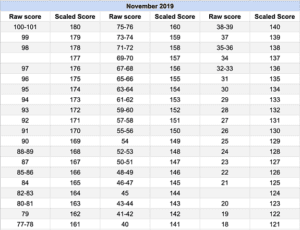
(Click to enlarge)
September 2019
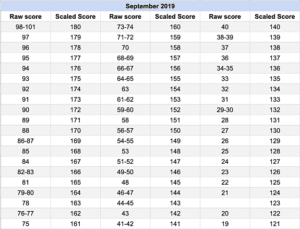
(Click to enlarge)
November 2018
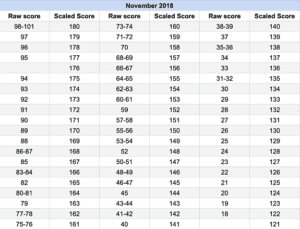
(Click to enlarge)
December 2016
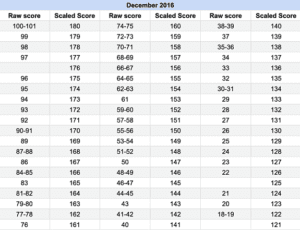
(Click to enlarge)
September 2016
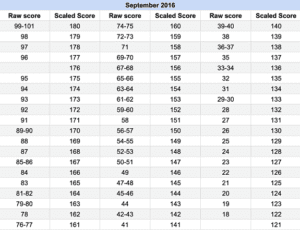
(Click to enlarge)
December 2015
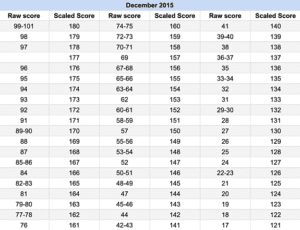
(Click to enlarge)
October 2015
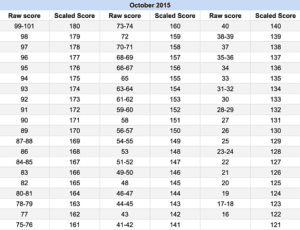
(Click to enlarge)
This calculator and the charts will give you a good estimate of what you’d earn on the shorter LSAT. Hopefully this can help ease some nerves before your LSAT test date.
And if you want to be even more prepared, rest assured our Live Course are consistenyly updated to ensure you can prepare for the LSAT no matter what direction LSAC wants to take us in! It’s no wonder our students increase their LSAT scores by 15 points on average!
Whether you have the discipline to study on your own with a Self-Paced Course, want to navigate the LSAT with instructors in a Live Course, or prefer one-on-one attention through tutoring, we have the study method that fits your learning style.
Search the Blog
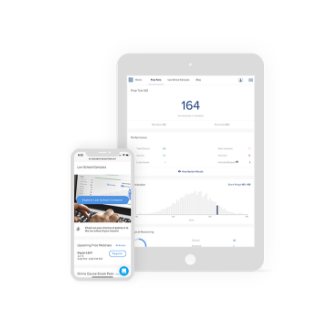
Free LSAT Practice Account
Sign up for a free Blueprint LSAT account and get access to a free trial of the Self-Paced Course and a free practice LSAT with a detailed score report, mind-blowing analytics, and explanatory videos.
Learn More
Popular Posts
-
logic games Game Over: LSAC Says Farewell to Logic Games
-
General LSAT Advice How to Get a 180 on the LSAT
-
Entertainment Revisiting Elle's LSAT Journey from Legally Blonde








